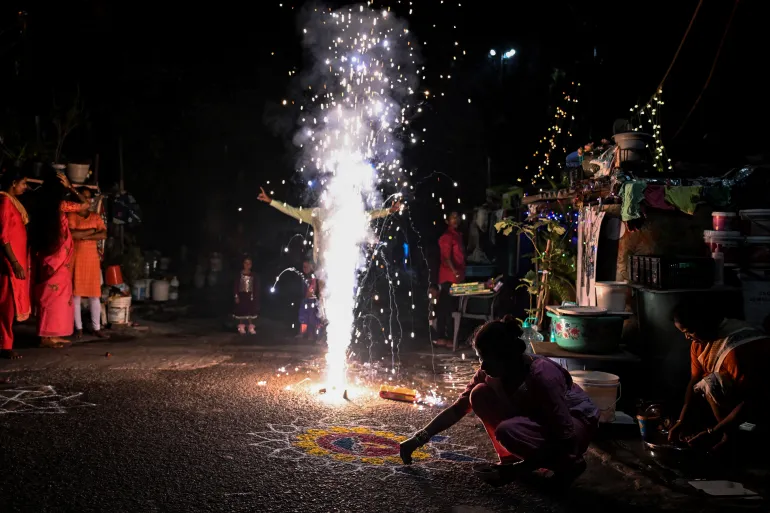Diwali fireworks push New Delhi’s air quality to ‘Hazardous’ levels

Diwali provokes ‘hazardous’ alert over New Delhi air quality.
New Delhi: The annual Diwali celebrations have once again triggered a severe spike in air pollution in New Delhi, with the city recording the most hazardous air quality levels in the world, according to Swiss monitoring firm IQAir.
On Tuesday morning, the Air Quality Index (AQI) in the Indian capital soared to 442, far above the “hazardous” threshold and more than 59 times the World Health Organization’s recommended safe limit for PM2.5 particles—microscopic pollutants that pose serious health risks.
Despite a partial Supreme Court ban on traditional firecrackers, widespread violations were reported throughout the city as residents lit fireworks well beyond the three-hour window allowed for “green crackers” on Sunday and Monday.
The Central Pollution Control Board (CPCB) rated the capital’s air as “very poor,” noting an AQI of 350, while IQAir ranked it the most polluted major city globally.
No Immediate Relief Expected:
The Ministry of Earth Sciences forecasts continued poor air quality in the coming days, with AQI levels likely to remain between 201 and 400. Each winter, New Delhi battles a toxic mix of construction dust, vehicular emissions, and smoke from agricultural fires, worsened by cooler weather that traps pollutants near the ground.
Authorities have historically responded with emergency measures such as school closures, construction bans, and traffic restrictions—though the long-term impact of these actions remains limited.
In November last year, Delhi’s AQI infamously reached 1,700—17 times the safe limit—during a particularly deadly smog episode.
South Asia’s Pollution Crisis:
India is not alone in facing the region’s escalating air crisis. Lahore, Pakistan’s second-largest city, recorded the world’s second-worst air quality on Tuesday, with an AQI of 234.
Officials in Pakistan’s Punjab province, which borders India, blamed cross-border pollution and have launched an “emergency plan” to curb farm fires, restrict smoke-emitting vehicles, and deploy anti-smog guns.
“The major issue right now is the air coming from Indian Punjab,” said Sajid Bashir, spokesperson for the Punjab Environment Protection Agency.
As festive joy turns into health hazards across South Asia, environmentalists continue to call for stricter enforcement and long-term solutions to the region’s growing air pollution crisis.
Read More News On
Catch all the Business News, Breaking News Event and Latest News Updates on The BOL News
Download The BOL News App to get the Daily News Update & Live News.